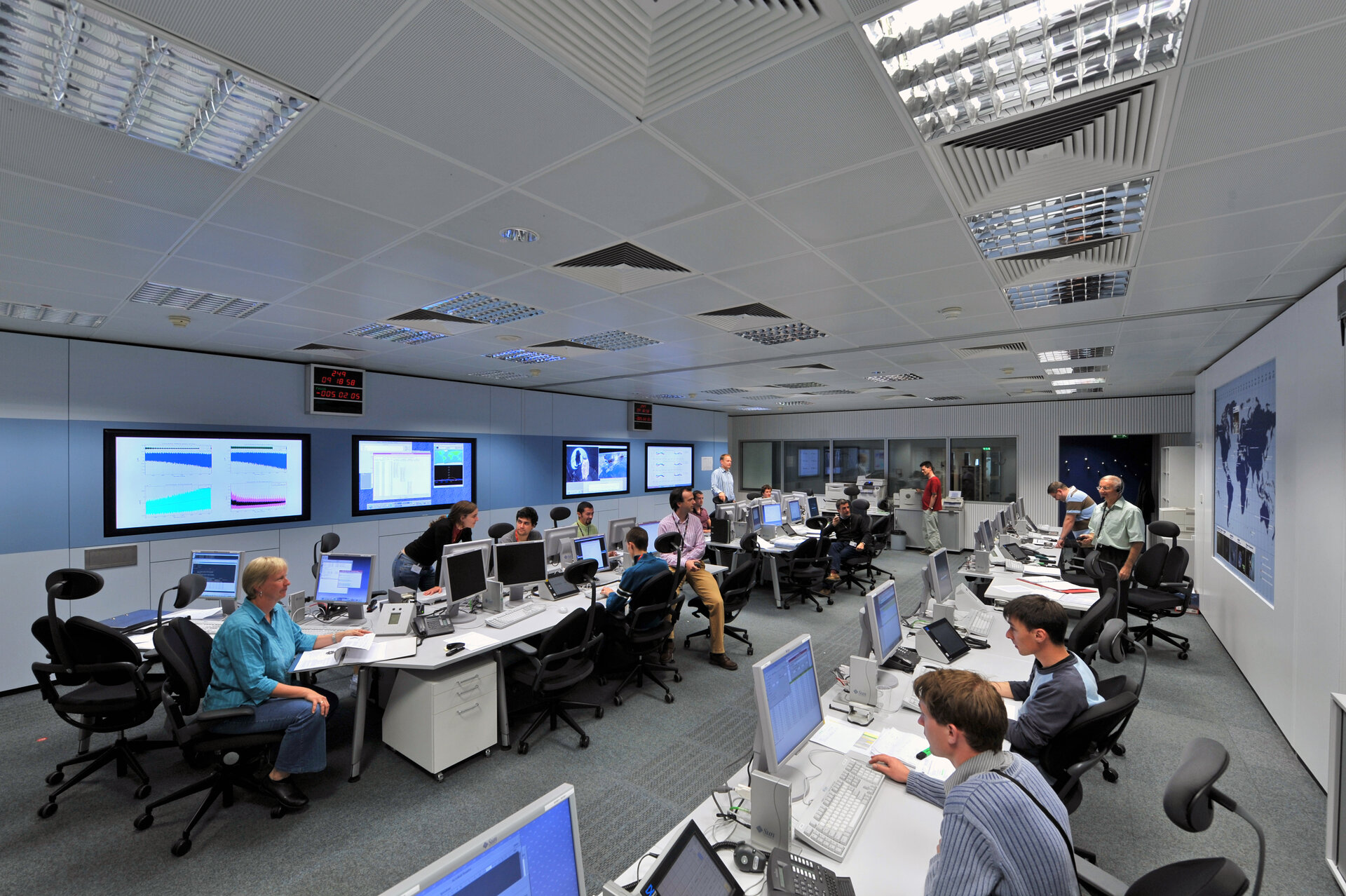Stay on track
No ESA satellite reaches its destination without the ‘spacecraft navigators’ – the flight dynamics experts who predict and determine trajectories, prepare orbit manoeuvres and determine satellite attitudes and pointing.
Flight dynamics experts at our ESOC operations centre work on every ESA mission, from those in very low orbits, like GOCE and CryoSat, to those exploring the depths of our Solar System, like Rosetta. They are involved from the first steps of a mission’s concept to the last command sent.
The experts work with data from ground tracking stations and from the spacecraft themselves to determine trajectories and orientations, feeding this information back to the spacecraft operations teams who ‘fly’ the missions.
Flight dynamics data are processed by a ‘team of teams’ – with separate groups dedicated to Earth-orbiting missions and deep-space missions. The split between them is conveniently set as ‘those this side of the Moon’ and the rest.
Every satellite mission has strict requirements. For one of the Earth observation missions, for example, the flight dynamics experts ensure that the satellite flies through an imaginary tube with a diameter of only 120 m as it circles Earth at 7.45 km/s.
For a spacecraft destined to orbit a planet, such as Mars or Venus, they have to determine the right time, duration and direction to fire the engine.
This demands highly precise, analytical work and every calculation is double-checked by an independent group to ensure correctness and accuracy.
One very accurate technique applied by the ESOC experts for interplanetary navigation uses special measurements called ‘delta DOR’ – for Delta Differential One-way Ranging.
Measurements from a pair of widely separated ground stations are used to determine the position of a spacecraft as far away as 150 million kilometres – the mean distance from Earth to the Sun – to within less than 1 km. Only a few of the world’s space agencies have perfected this highly precise technique.
For more information, watch our video Navigating in Space



